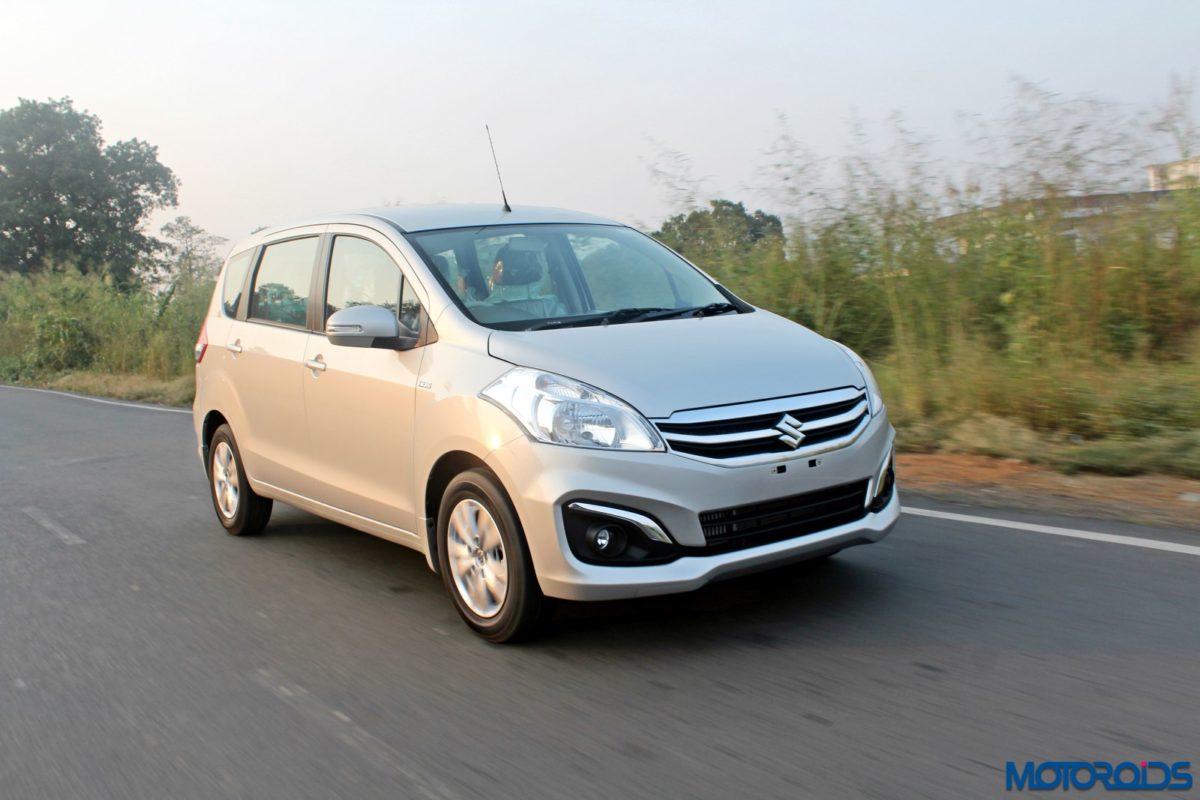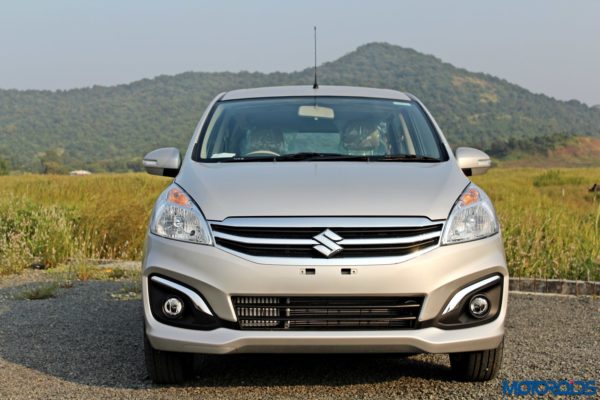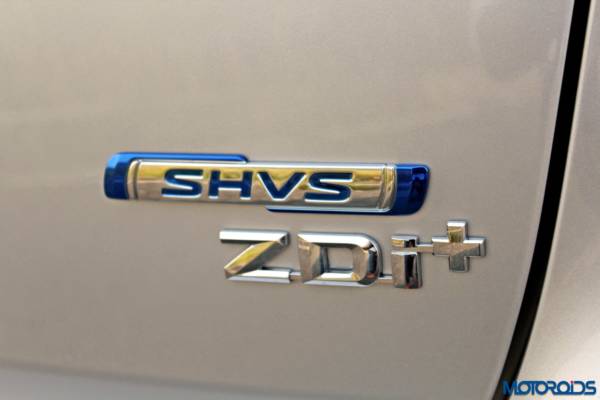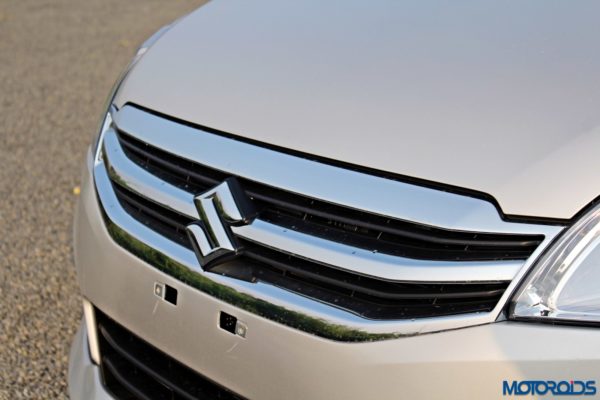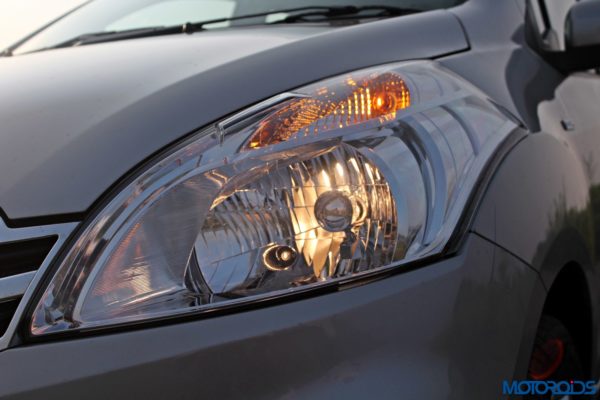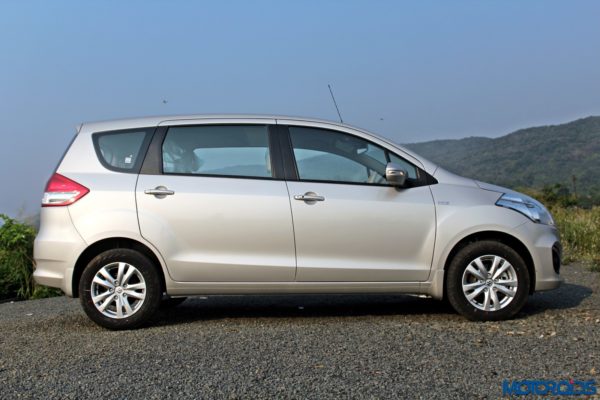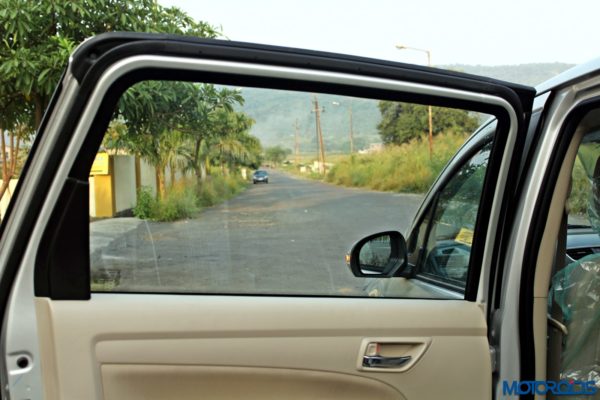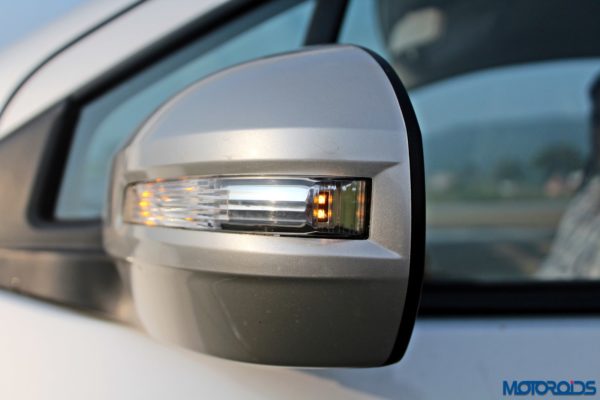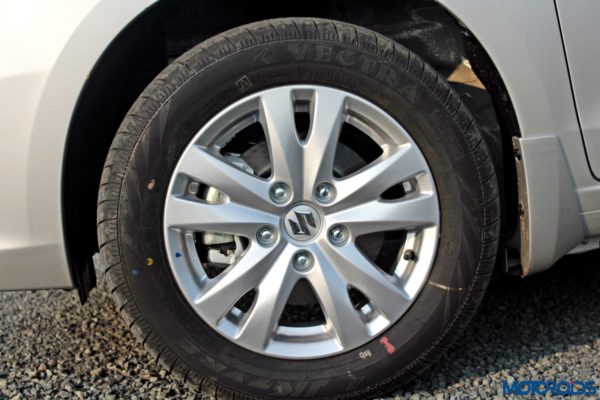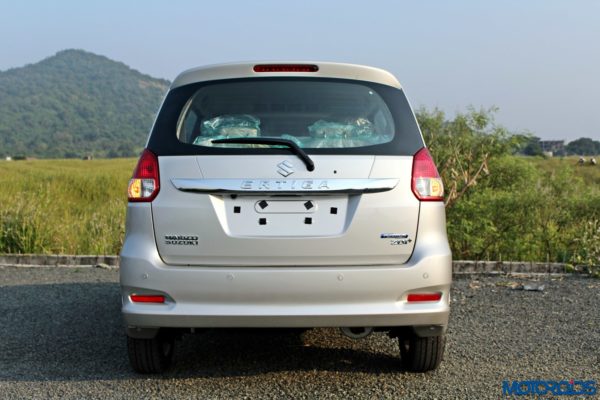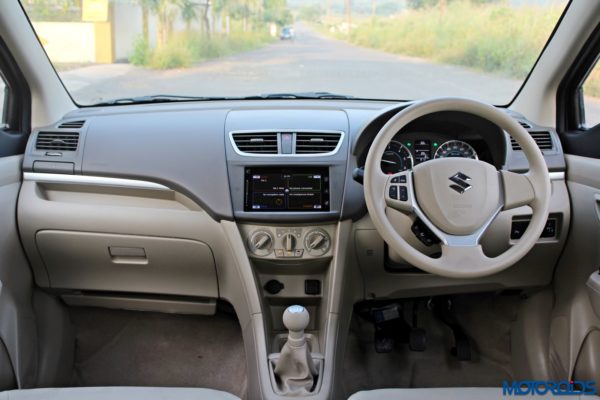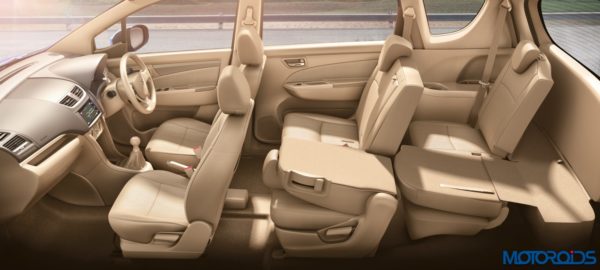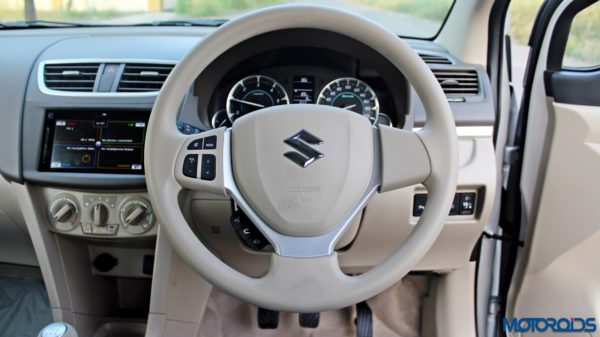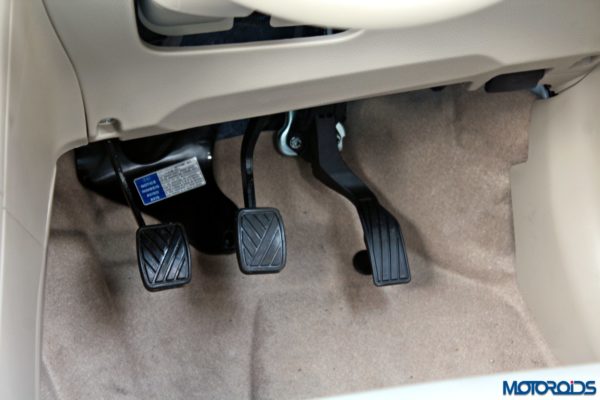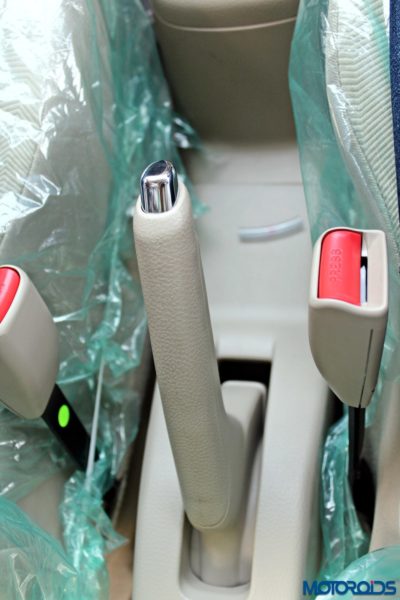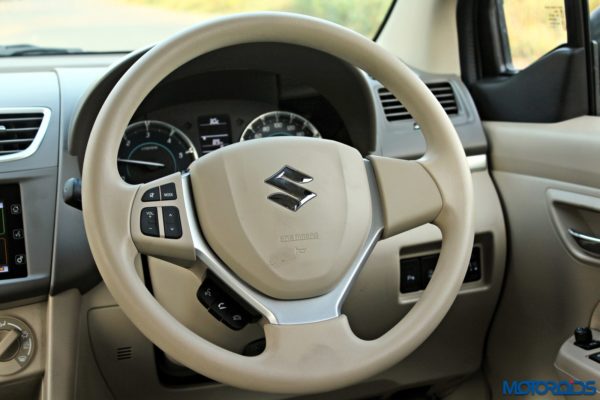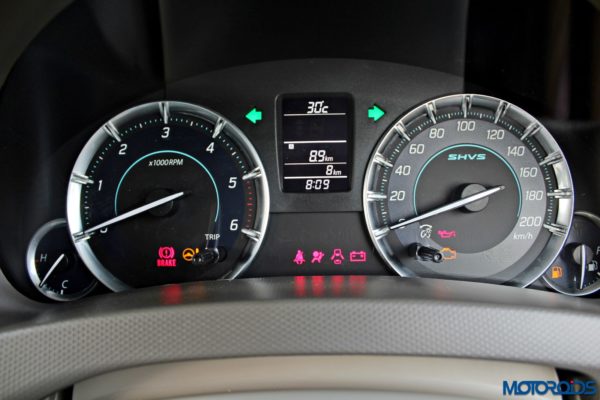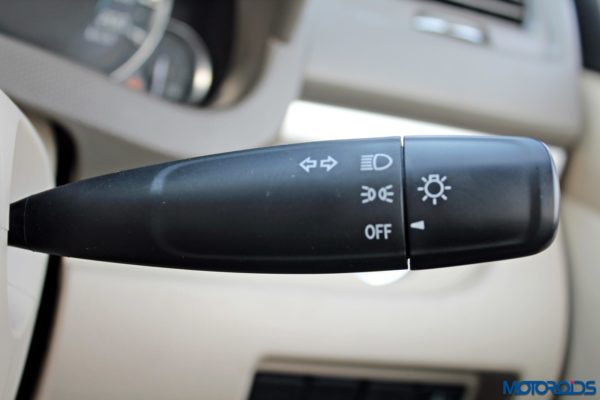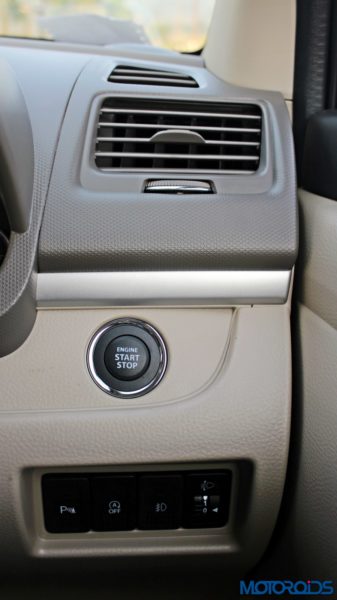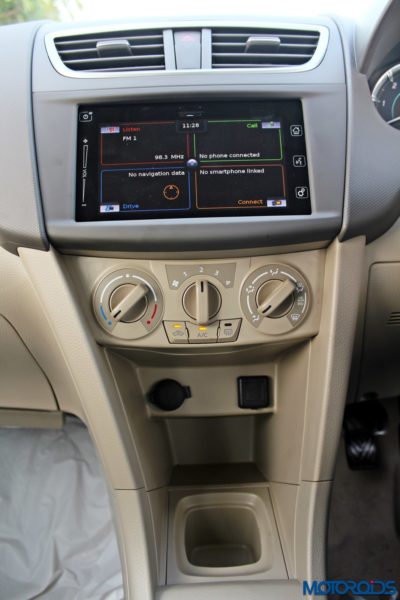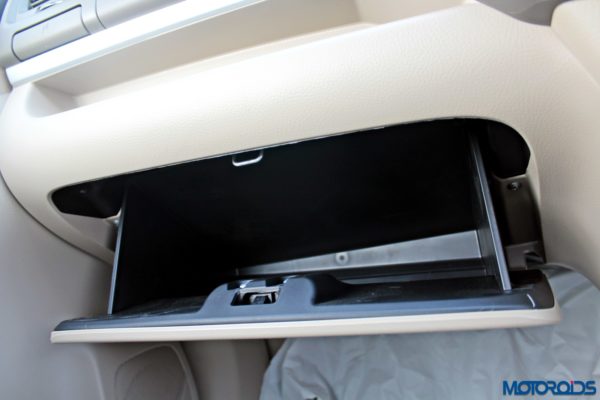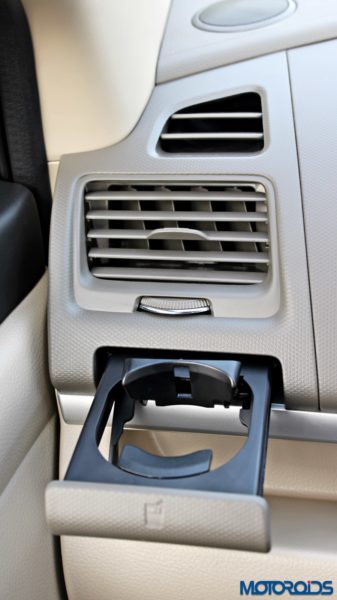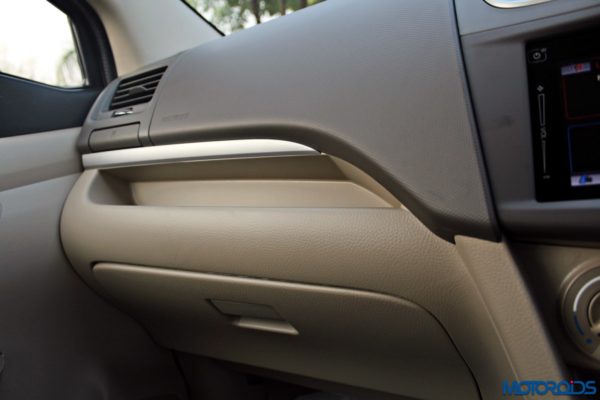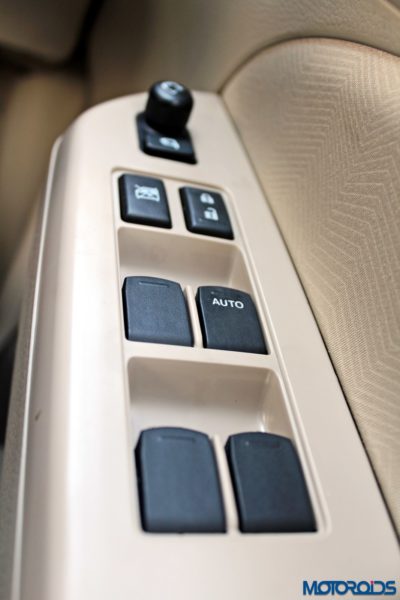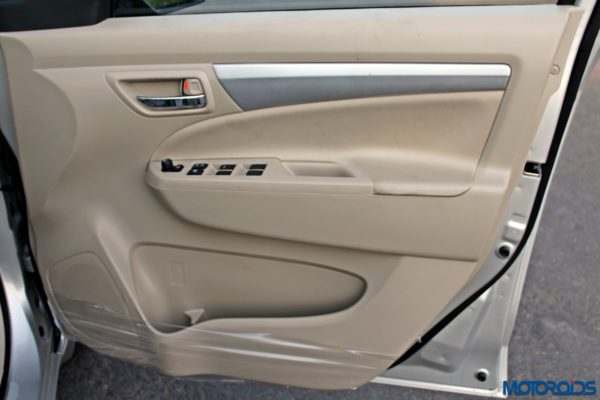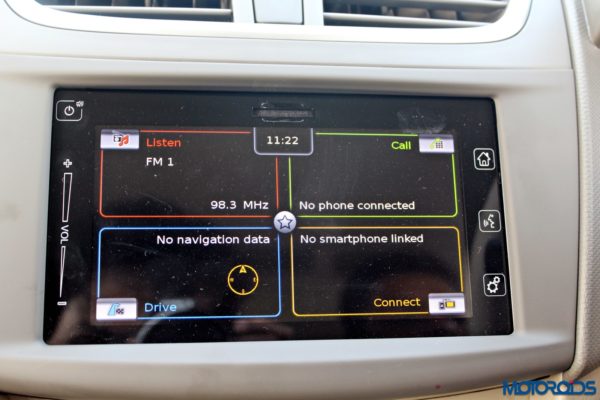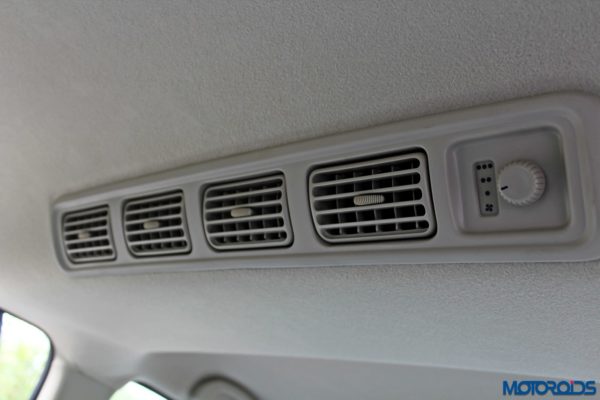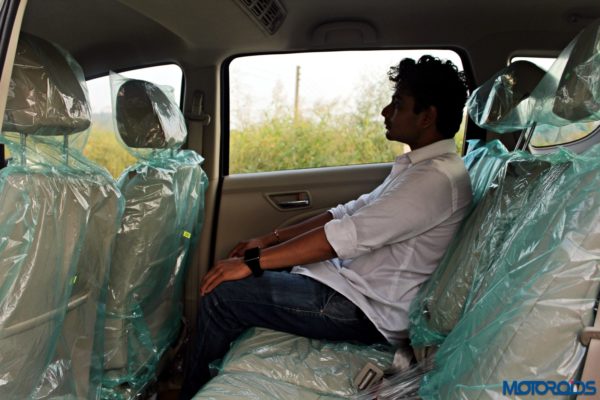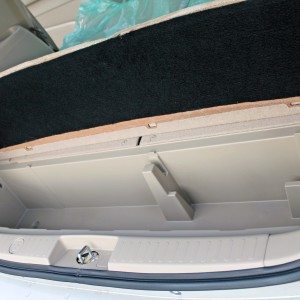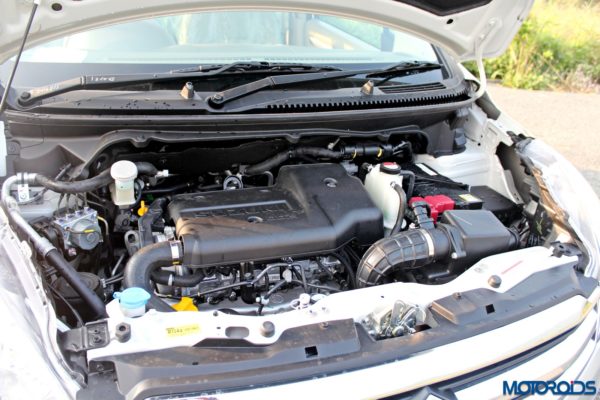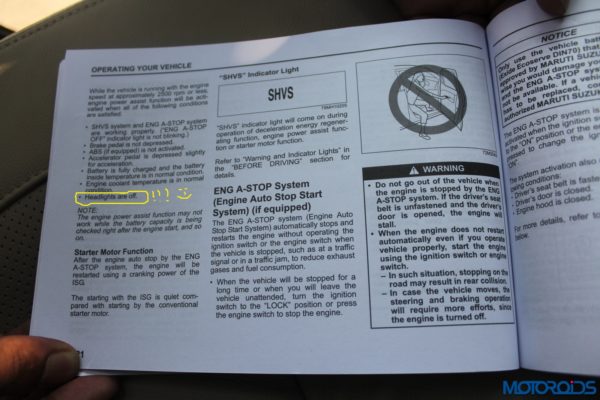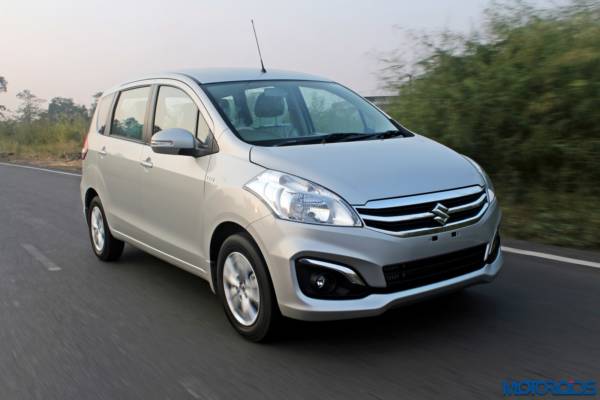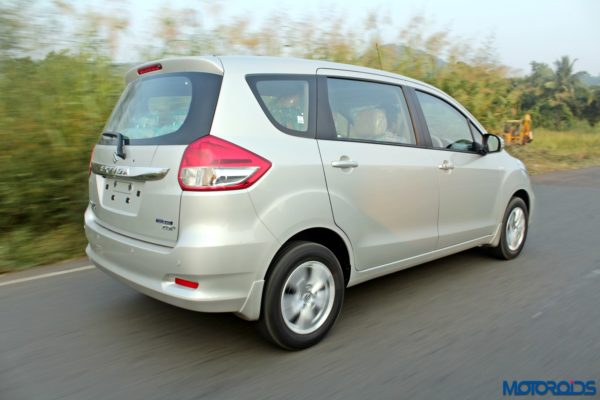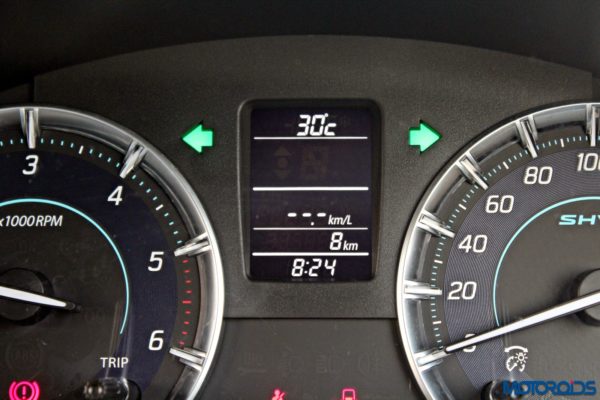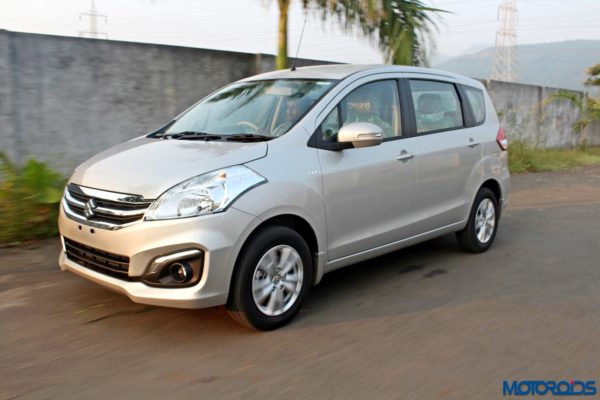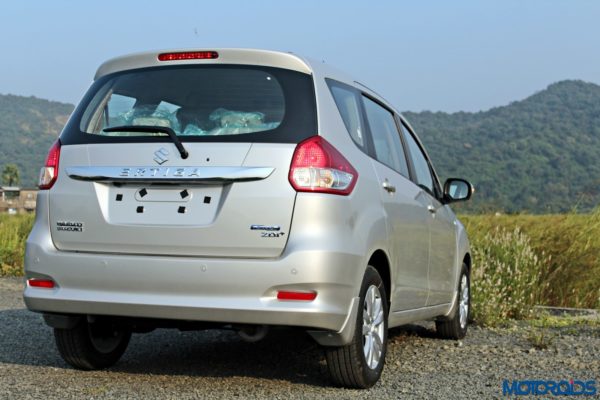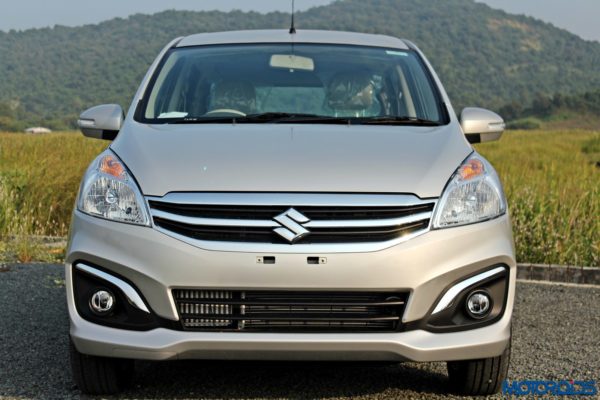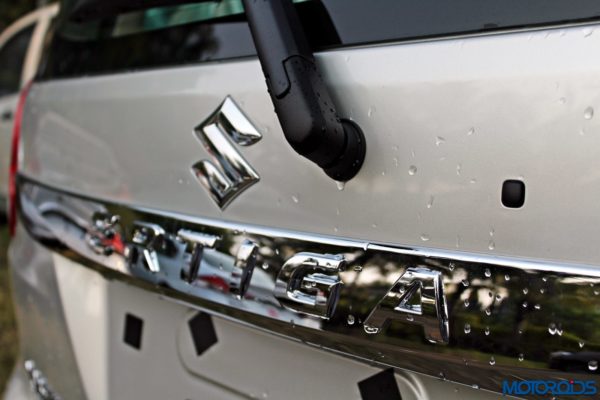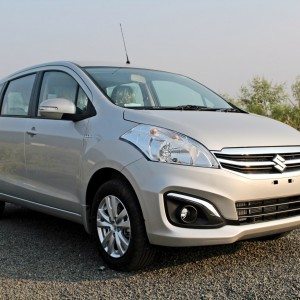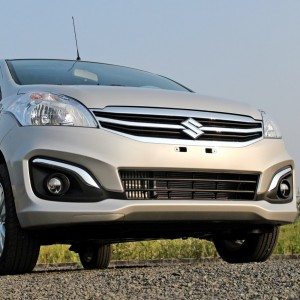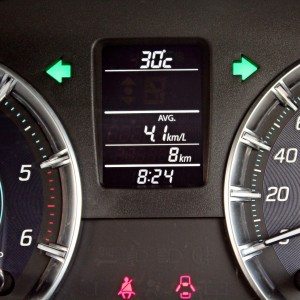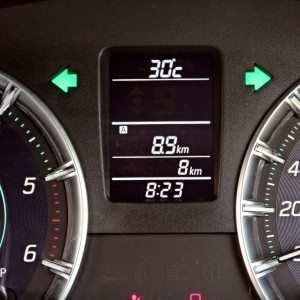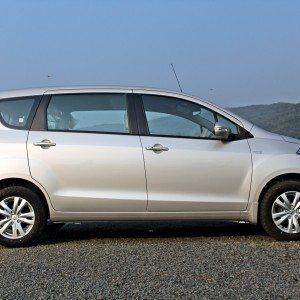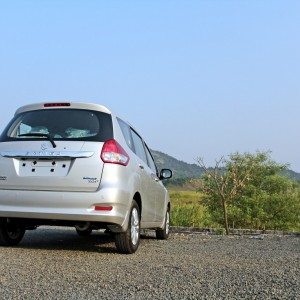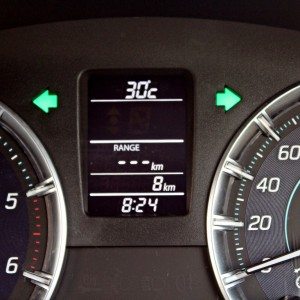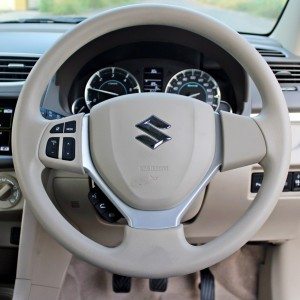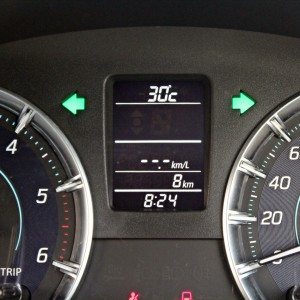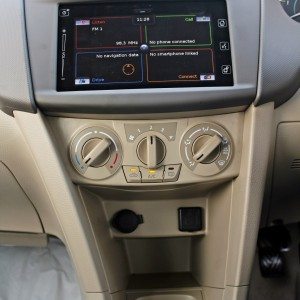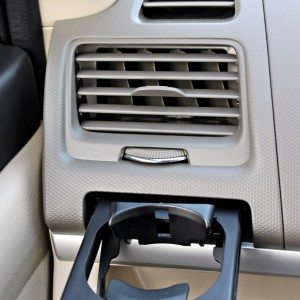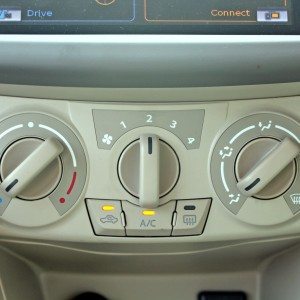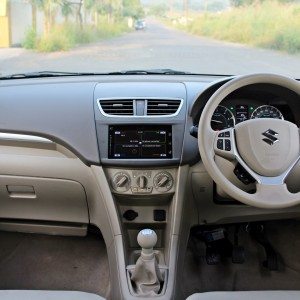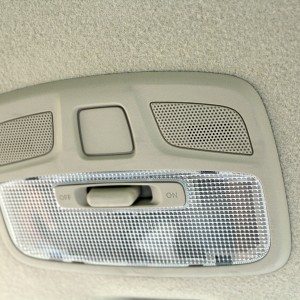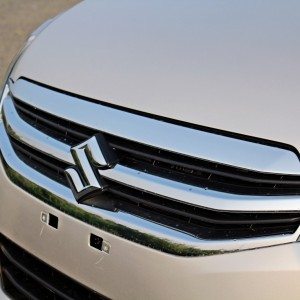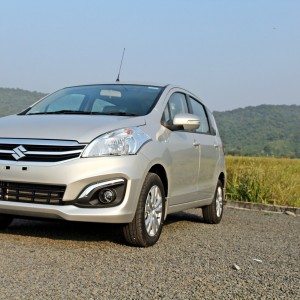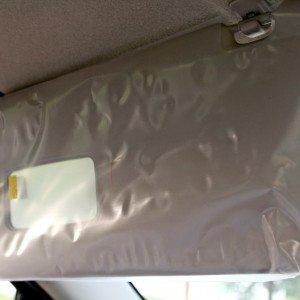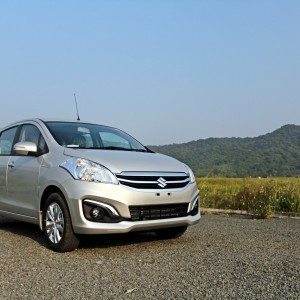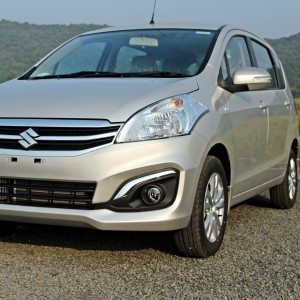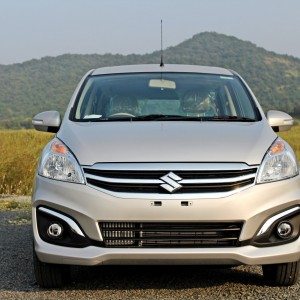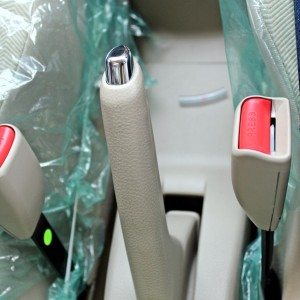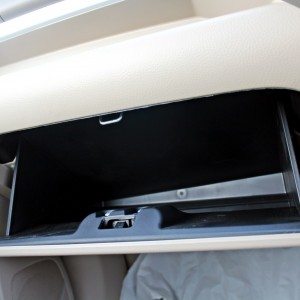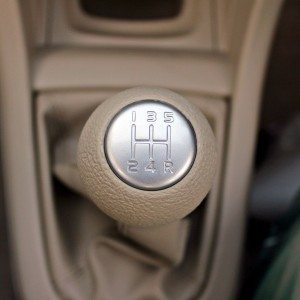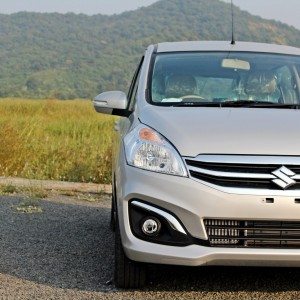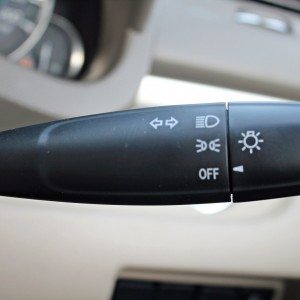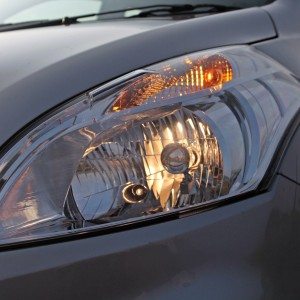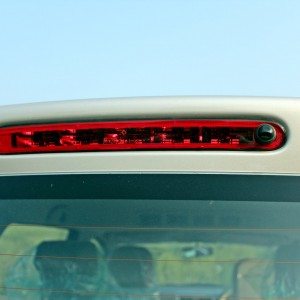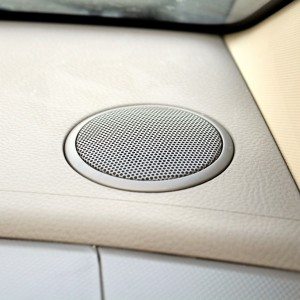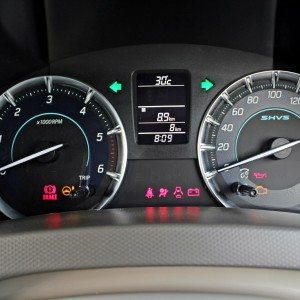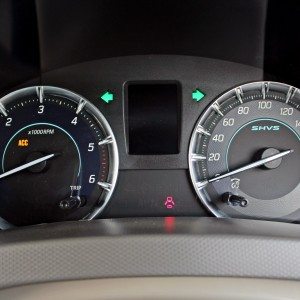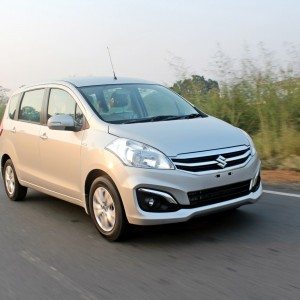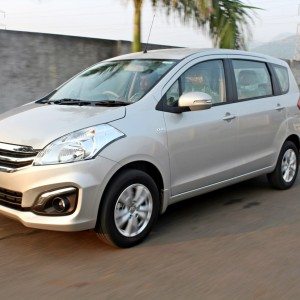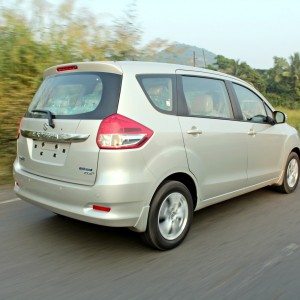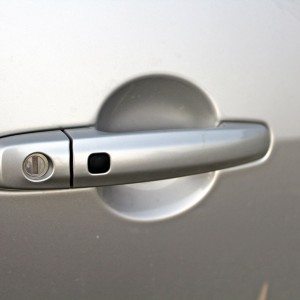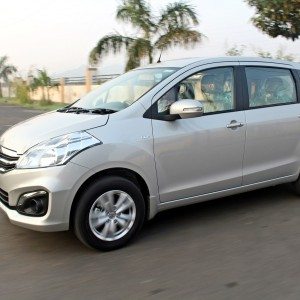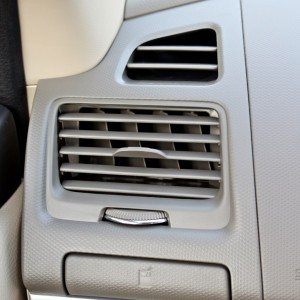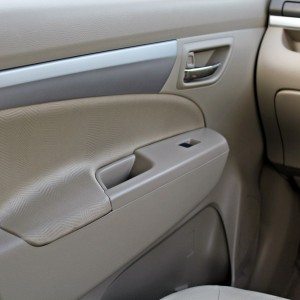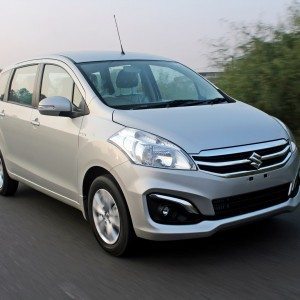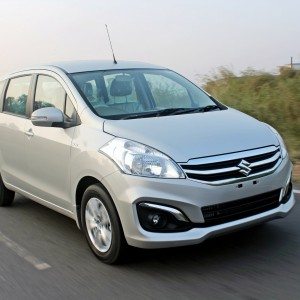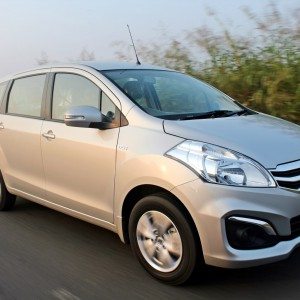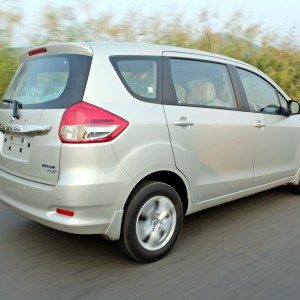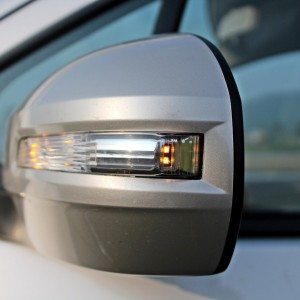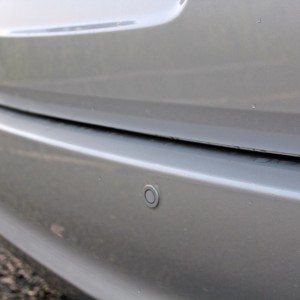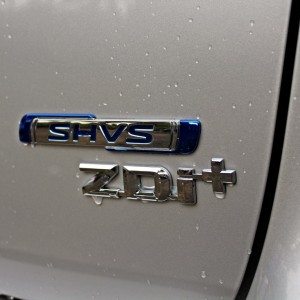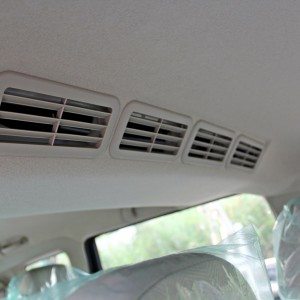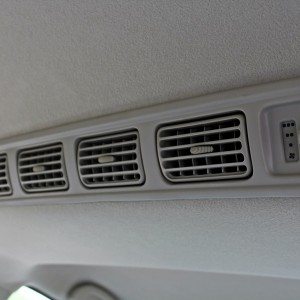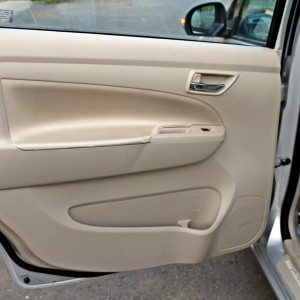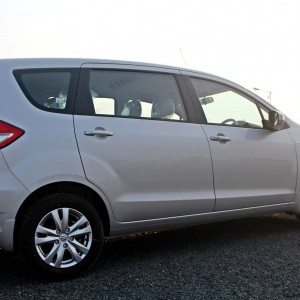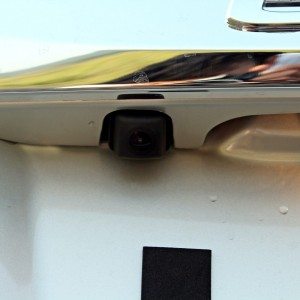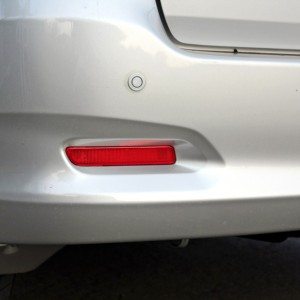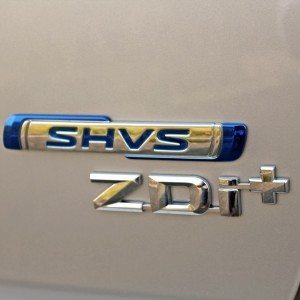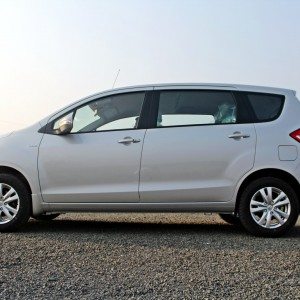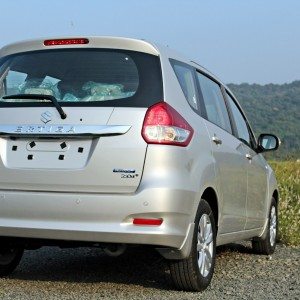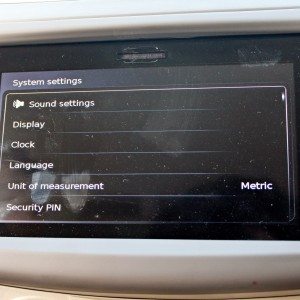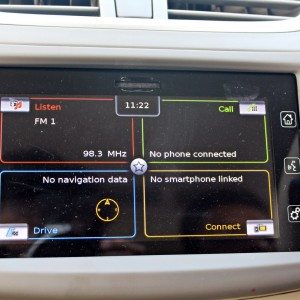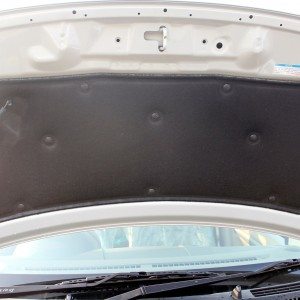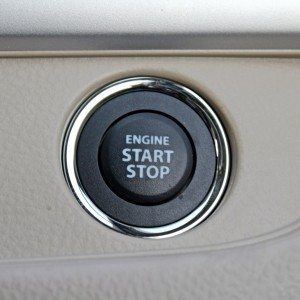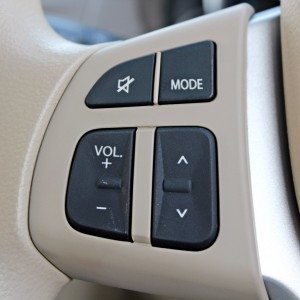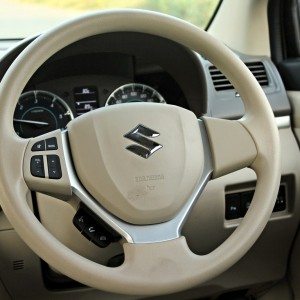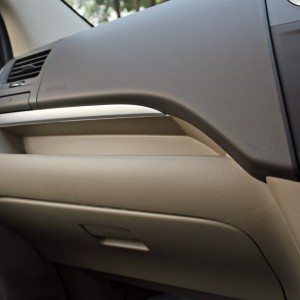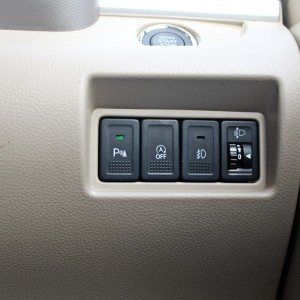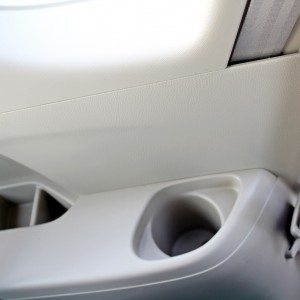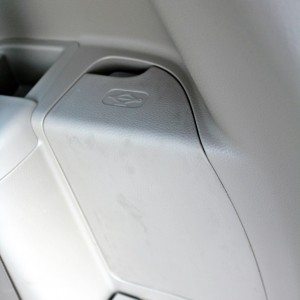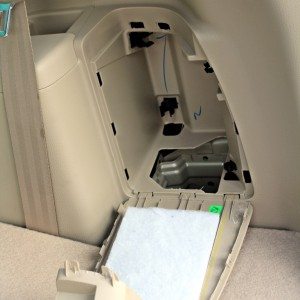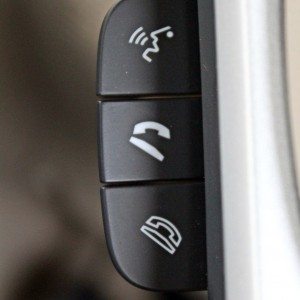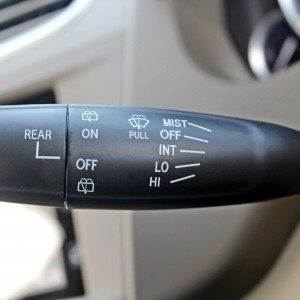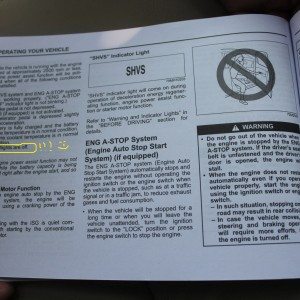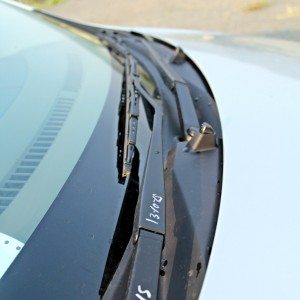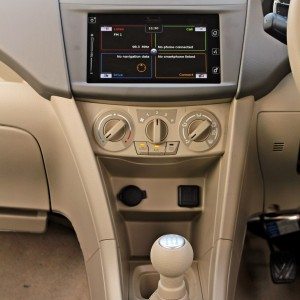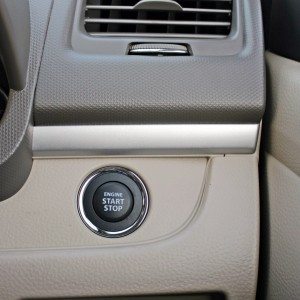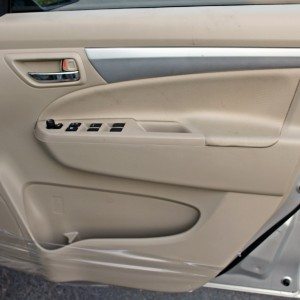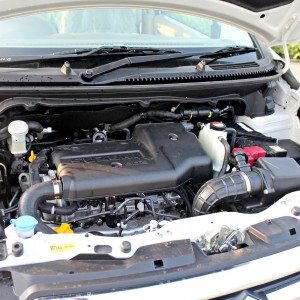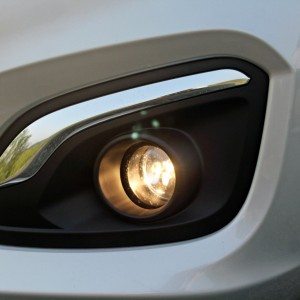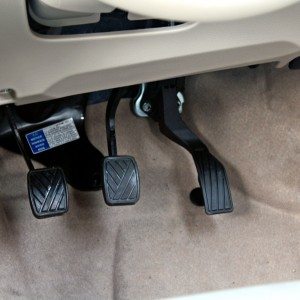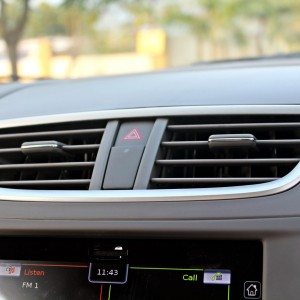The Maruti Ciaz may well be boasting of being the first diesel hybrid sedan in the country, but there’s something else in the car maker’s arsenal that wants to stick its neck out for being a Greenpeace activist. The 7-seater (Or rather 5+2) Ertiga has gone through a makeover just in time before the festive season, and like the Ciaz, gets Maruti’s minty new SHVS or Smart Hybrid Vehicle System.
Trying to steal some glamour from the Ciaz in the “I did it first” act, the new Ertiga will be the first mainstream people mover or MPV in the country to come equipped with such technology. Looking at the spec sheet, where even the base LDi model will come fitted with the electric gadgetry, it could also be the cheapest hybrid one could buy. There are some styling updates, as well as a few new features that have been added, let’s take a look.
Images: Chirag Mondal
External Appearance
Up front, the very evident change in styling comes in the form of a 3 slat chrome grille that replaces the earlier all black honeycomb unit. A relatively thicker patch of shine sits just beneath the bonnet shut line, whereas the two slats beneath that follow a curve lend some cheer to the front, when compared to the relatively drab looking earlier grille.
A redesigned bumper now incorporates a smaller, almost square shaped air dam, which has in turn, allowed more space for the fog lamp housings. While they used to be nestled in a vertical plastic housing on the outgoing model, the fog lamps continue to be round in shape, but now get some added glitz in the form of chrome lined eyebrows. The lamps are engulfed in black surrounds which leave a droplet style trail near the air dam. The C-shaped fog lamp area is now larger and also curved, in comparison to the angular section on the outgoing model.
Sweeping headlamps remain, and while you’d expect something like a projector unit inside, the lighting system is rather conventional.
Moving sideways, the flared wheel arches along with a sharp crease that connects them at the lower end, do a good job of adding some muscle to what would have been otherwise, a glum looking side section of a typical MPV. A subtle crease runs through the shoulder, just beneath the Ertiga’s large greenhouse area.
Talking about greenhouse, the 2nd row rear window is humongous! So much so, it reminded us of the Maruti Omni days when people would joke about the van being the most convenient car for abduction, courtesy of those sliding doors. On the Ertiga then, the glass slides down completely, making the window so massive, for an abductor, he or she could just pull a full grown man inside with ease, while for the one who’s abducted, it remains just as easy to jump out. Works for both parties then, Nice!
ORVM mounted side blinkers remain, while alloy wheels shun the earlier 10-spoke design in favour of a V-shaped, split pattern with as many spokes.
Moving backwards, etched with the car’s name, the vertically opening tailgate has been slapped with a slab of chrome, that sits right in the middle. The rear bumper has been slightly redesigned, and although it retains reflectors at each end, the fog lamp that occupied space in the middle on the outgoing car has now gone missing. Tail lamp design and everything else remains identical to the outgoing model.
Cabin and Features
The moment you open any of the doors to step inside, what takes you by surprise is the generous use of beige throughout the cabin. It does lend a feeling of cheer inside. As you sink in the deluge of happy, cheery beige, it makes you feel weird if you’re glum and listening to a sad song, the atmosphere inside the cabin just doesn’t go well with that sort of music. The other downside to being in ‘Beige-ing’ is that everything gets soiled very easily. The steering wheel picks up the grime from your palms, the seat fabric attracts marks, the area near the foot board picks up grime from your shoes and all that mess is visible in an amplified manner, thanks to everything being painted in a shade of happy.
Once in the seat, achieving the right driving position is aided by a height adjustable driver’s seat, coupled with a steering wheel adjustable for rake only. The pilot and navigator seats are wide and offer good lateral, under thigh and back support. It should be a good place to be seated in, even for longer journeys.
What will be missed though is the omission of a centre arm rest for the driver and a dead pedal. Visibility is good, thanks to the A-pillar getting quarter glass treatment, which would’ve otherwise created a huge blind spot around corners.
The 3-spoke steering wheel feels good to hold and gets controls for telephony, audio and voice assist. Behind that is a neat looking instrument cluster that embeds a tacho, speedometer, a conventional temperature and fuel gauge, a neat looking LCD display and space for warning lights. Two switches pop out of the cluster, one lets you dim the illumination for smartplay and the instrument cluster, while the other lets you toggle between screens on the MID system.
Average quality stalks for the wipe/wash system and headlamps are placed behind the wheel as usual.
Beneath the driver side AC vent is the switch for the Start/Stop system, while a panel below that gets buttons to deactivate the Auto start/stop, parking sensors, fog lamps and headlight level adjustment.
The waterfall centre console is identical to the one that was found on the outgoing model, the only exception being the introduction of a smartplay system. Air conditioning controls sadly, are manual. Power and Aux-in/USB outlets take space in a recess below the AC controls.
A pop-out cola can holder beneath the passenger side AC vent and a recess above the average sized glovebox, try and fill in for the surprising absence of cup holders. Given the product being marketed as a life utility vehicle, a little vent to cool the glovebox would’ve been a nice feature to have.
Silver highlights find their way around the central AC vent, with strips running above the passenger side storage recess and below the driver side AC vent. Door handles are finished in chrome, while the silver trim finds its way on the front doors too.
Controls for the powered windows, locking system and mirror adjustment are placed conveniently on the driver side door. However, only the driver’s window gets an auto down function, while the rest of the passengers will need to hold that button down. Moreover, quality of those switches could’ve been better.
Front doors have a recess for a 1-litre bottle, while the rear can squeeze in a 500ml sized bottle, with some additional space to store random belongings. Quality of materials used if not great, is good enough, while fit and finish gets a reassuring nod.
The new Smartplay infotainment system is operated via a touch enabled WVGA TFT display. Unlike other systems, we found the touch sensitivity to be great and switching between menus is a breezy affair. It lets you connect compatible smartphones through MirrorLink and Apple Carplay, which enables you to access authorised apps through SMARTPLAY. The system supports Bluetooth Connectivity, Voice Command, comes with a Navigation System that recognises Indian accents through voice commands and also doubles up as a Reverse Parking Camera Display. We weren’t able to gauge the sound quality as none of us was carrying music on our smartphone, however, whatever was being played on the radio sounded clear and fairly crisp.
Moving to the second row of seats. The first thing you notice is a roof mounted AC that gets a single dial to control air flow through four vents. Unlike what it makes you think, it isn’t just a blower, but a proper air conditioning unit. Talking about the cooling efficiency in the Ertiga, it was 38 degrees outside when we were testing the car. With two of us inside, although it took some time, given the extensive greenhouse area, the AC did not chill us to the bone, but did its job fairly well.
The second row of seats is a split unit that gets retractable backrests and both slide forward to enable access to the third row. While I was there for a brief period, under thigh support seemed a tad inadequate for six footers, but what made me glad was that I could choose the angle of that backrest. The middle row seat also gets an arm rest, while leg room is plenty, depending on what happens in the third row. Headroom is more than adequate, while the width can be an issue if three passengers decide to share the seat. Ingress and egress is never an issue, thanks to the massive rear doors, which also brings us to that special rear window that has some strange allure about it. Passengers in the middle row also get a single power outlet to charge their devices.
Coming to the all-important space behind the second row, to be honest, it is a squeeze back there. Older folks and tall people will be understandably reluctant to park themselves in that space. In order to get to the third row, the second row seat’s backrest tumbles down, while a lever at the bottom pulls it forward. It isn’t all that difficult to get there, but once settled in, legroom is an issue. One can pull the second row seat forward, but then it makes life a little uncomfortable for everyone. It can seat two adults for shorter distances, while for anything more than that, only kids will be happy to be there. Having said that, there are two cup holders, seatbelts and adjustable headrests for the last row folks.
The Ertiga then, can be best described as a 5+2 seater, which can carry fair amounts of luggage with the third row folded down. With all seats intact, load carrying capacity is poor even with a long compartment back there and squeezing knick- knacks for a day’s picnic is all that you can stash.
Performance, Ride & Handling
The 1.3-liter Fiat sourced DDIS motor remains and runs in the same state of tune as the outgoing model. Power figures remain unchanged and the turbo charged motor pumps out 89bhp at 4000 rpm and 200 NM of twist at 1750 clicks. What assists the motors though is the new SHVS tech that assists the engine till 2500 rpm for additional shove, stores energy generated during braking in the electrical system and Starts/Stops the engine without stressing the starter motor in stop/go traffic.
Shedding some more light on this piece of low cost hybrid tech, it has some pre-requisites before it can kick in. Like the driver’s door needs to be shut, seatbelt has to be worn, the air-conditioner needs to be in auto mode, headlights must be switched off. Wait a minute, so the hybrid system doesn’t work after daylight?! We couldn’t test since the car was with us for a brief period.
The motor settles in a vibe free idle, only letting keen ears inside the cabin notice that there is an oil burner under the hood. Off the block, initial gear ratios are short and until the turbo spools at 1900 rpm, driveability is decent, although not in the same league as the Innova. The SHVS system does assist, but only if you are gentle with the accelerator until it dials 2500 revs. Floor it and you’ll never see the green SHVS lamp light up in the instrument console, which is apparently the only way you’d know that the system is at work. The hybrid system works very discreetly in the background in an unobtrusive manner and until you drive a non-hybrid Ertiga alongside this one, it would be difficult for you to tell the difference.
The Auto/Start stop function can be deactivated via a switch, while we only managed to make it work a couple times for the entire duration the car was with us. Also when dropping the anchors sedately, brake energy regeneration kicks in, but one has to keep that left foot away from the clutch. Brakes are on the spongier side, but assisted with ABS and EBD, they bring the Ertiga to a halt in a civilized manner even from higher speeds.
About the conventionally powered engine, once the turbo spools around 1900 rpm, there is an evident surge in power that tapers off near the 3500 mark, post which you may rev it if you like beyond 5000 rpm, but shifting before that will keep the momentum going just as much. While initial gears are shorter, the ratios beyond that are tall enough to make the Ertiga cruise comfortably at three digit speeds. For the ones obsessed about fuel economy, there is a gear shift indicator that suggests up/down shifting to maximize efficiency. Thanks to electric intervention, the Ertiga diesel now promises to deliver 24.52 km/l, an improvement of 18% over the outgoing car. With a 45 litre fuel tank, this Maruti could go beyond the 850 km mark before one needs to refuel.
For an MPV, the Ertiga retains its car like characteristics and feels like an extended hatch to drive. There is some weight to the steering, although the extended wheelbase reminds you of its presence if you carry higher speeds around corners. Still, being a monocoque, for an MPV it can carry higher speeds with confidence. Straight line stability is good, however, the rear isn’t as planted over undulations and when the going gets rough. Within urban limits, turning around the car shouldn’t be an issue, thanks to a shorter turning radius of 5.2 meters.
Ride quality isn’t plush as we figured, especially in the rear seat, as with just two people in the car, one could make out what that rubber was rolling over. However, the characteristics could change for better once all or most of the seats are occupied. Having said that, even with just the driver, the Ertiga doesn’t crash through potholes, neither does it glide over them. Finds a decent middle balance we’d say and unlike MPVs, the Ertiga rides more like a car.
Summing it up
The Maruti Suzuki Ertiga is a perfect vehicle if you are a family man looking for a car that can carry your wife, parents and a toddler along. There’s space for another kid too if you’ve got two, but carrying any luggage then would be an issue. A way around that is installing an ugly roof rack, but then that is a choice if you’re hell bent on buying a 5+ seater Maruti.
The Ertiga is a no nonsense product that checks most boxes, rides and drives like a car, is backed by Maruti’s extensive network, should be easy on your pocket to own and now comes packed with tech that enhances efficiency and helps you do your bit for the planet. But then it faces stiff competition from competent products like the Renault Lodgy and the Honda Mobilio. At Rs 925,358 INR (Ex-showroom, Delhi), it will definitely breach the million-rupee mark if you include taxes and insurance, but in the Vdi trim at almost exactly a lakh less, it does present a strong case for itself. If you ask us, we’d say it is robust product that serves great value if you need an efficient 5-seater which can seat 7 if the need arises.
All prices Ex-showroom, Delhi.
| Variant ( Petrol) | INR | Variant (Diesel) | INR |
| Lxi | 599,907 | Smart Hybrid Ldi | 755,826 |
| Lxi (O) | 635,339 | Smart Hybrid Ldi (O) | 762,778 |
| Vxi | 726,257 | Smart Hybrid Vdi | 826,300 |
| Zxi | 785,561 | Smart Hybrid Zdi | 882,540 |
| Zxi+ | 842,572 | Smart Hybrid Zdi+ | 925,358 |
| Vxi AT | 826,257 |
Specifications & Features:
| Lxi/Lxi (O) | Vxi | Zxi | Zxi+ | Ldi/Ldi (O) | Vdi | Zdi | Zdi+ | ||
| Length | 4265 | ||||||||
| Width | 1695 | ||||||||
| Height | 1685 | ||||||||
| Wheelbase | 2740 | ||||||||
| Turning Radius (m) | 5.2m | ||||||||
| Seating Capacity | 7 | ||||||||
| Kerb Weight | 1135/1145 | 1175 (MT)/ 1185 (AT) | 1175 | 1180 | 1235/1240 | 1260 | 1265 | ||
| Engine | |||||||||
| Type | K14B | D13A SHVS | |||||||
| Capacity (cc) | 1373 | 1248 | |||||||
| Compression Ratio | 11 | 17.6 | |||||||
| Bore X Stroke (mm) | 73×82 | 69.6×82 | |||||||
| Power (kW @ RPM) | 68 @ 6,000 | 66 @ 4000 | |||||||
| Torque (Nm @ RPM) | 130 @ 4000 | 200 @ 1750 | |||||||
| Fuel Tank Capacity (L) | 45 | ||||||||
| Emmission Type | BS IV | ||||||||
| Drive | 2WD, FF | ||||||||
| Transmission | 5MT | 5MT/4AT | 5MT | ||||||
| Suspension | |||||||||
| Front | McPherson Strut | ||||||||
| Rear | Torsion Beam | ||||||||
| Tyre Size | 185/65 R15 | ||||||||
| Brakes | |||||||||
| Front | Ventilated Disc | ||||||||
| Rear | Drum | ||||||||
| Lxi/Lxi(O) | Vxi | Zxi | Zxi+ | Ldi/Ldi(O) | Vdi | Zdi | Zdi+ | |
|---|---|---|---|---|---|---|---|---|
| Idle Start Stop | – | – | – | – | O | O | O | O |
| Gear Shift Indicator | – | – | – | – | O | O | O | O |
| Brake Energy Regeneration | – | – | – | – | O | O | O | O |
| Torque Assist | – | – | – | – | O | O | O | O |
Heartfelt thanks to Shivam Autozone, one of the largest and preferred Maruti Suzuki 3S dealers in Mumbai.

